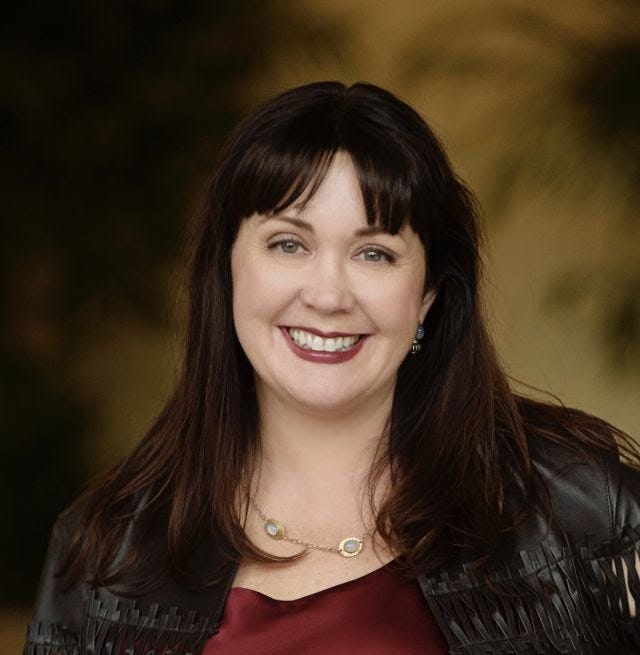Week 21.49 Stronger Together
Last night we celebrated my parents' 65th wedding anniversary. It was an evening of reflection and celebration. My sister gave a beautiful toast, articulating her gratitude and that of my brother and me for the amazing example of love, caring and commitment my parents gave us. My mother followed up with a toast that expressed her belief that the key to their successful marriage was that they had been committed to the same goals and values. It was a beautiful evening.
The thing is, my parents are very different. My mother likes to come to a quick decision, my father likes to consider all angles and investigate all possibilities. On the other hand, my father seems to hold his positions more tightly, and my mother changes her mind more freely. Stylistically they are so different, it is comical. And at the same time, their two styles are combined holistically in a way that two people of the same style would never be able to manage. I’ve come to realize that the combination of their styles is superior to either one individually.
In Prius or Pickup, Marc Hetherington and Jonathan Weiler propose that the biggest difference between people is not ideology, it is the system of values or worldview that drives people apart. The fixed worldview people are more cautious of social and cultural change and hence change more slowly, more reluctant to accept outsiders, and more comfortable with the familiar and predictable. The fluid worldview people support changing social and cultural norms, are excited by the new and novel, and are open to people who look and sound different. The fixed people like to congregate with their close friends. The fluid people are part of evolving groups. Each group is naturally occurring in our world, there is no right or wrong way to be.
Philip Tetlock, in his book Superforcasters, uses a metaphor from Isaiah Berlin of the hedgehog and the fox. The hedgehog is committed to and sees the world through a single defining idea. When new information comes in, they are not as likely to change their opinion. Foxes are not attached to a particular ideology and look to incorporate a wide range of views; they are more flexible. Hedgehogs can be liberal or conservative, their defining feature is that they are fixed to a big idea. Foxes are better predictors of the future because they are more open to new ideas and willing to accept their current point of view as wrong. On the other hand, they need the hedgehogs because hedgehogs create provocative ideas that the foxes can consider and qualify.
In life and leadership, we need to work with both types of people and deploy the strengths of each to the mutual advantage of both. You are likely to identify with one of these classifications or the other. Perhaps most of the people you know fit one type or the other. Or you think one is right and the other is wrong. Right or wrong misses the point. Human society has evolved because each type advances the common welfare. The fixed side grounds us and prevents us from unsettling change. The fluid side is open to new ideas and explores advances and opens us up to what is possible. The hedgehog digs in and the fox tests the alternatives. Working together, they create a balance between stability and innovation.
My parents are an example of a great team because great teams are made up of different types of people who take different approaches and still respect the other team members. I never remember my parents fighting, but I was well aware that they had differences of opinion. Fixed or fluid, hedgehog or fox, the idea that one stood ground while the other challenged, or that one explored while the other dug in. And over the long term, that is what great teams are, diverse groups that are stronger together. 65 years of success is an example worthy of celebration.
Design the Life You Love - Virtual Tea Invitation December 8, 2021, 5 PM EDT.
Join a very special, holiday edition of Design the Life You Love by Ayse Birsel Virtual Tea (#86), where she will be joined by Lee Kim, a true original, who was featured in a New Yorker documentary. Lee is a design thinker, an engineer, and a community builder. She currently serves as Global Congress Lead at Pfizer and is the founder of a social impact non-profit, Design Dream Lab, and the co-founder of the global design thinking community, Design Thinking Zeal.
"As we begin to emerge from a year of isolation and stretchy pants, the arc of “Wearable Tracy” feels like a subtle road map for how to reconnect, both emotionally and sartorially. In the aftermath of a terrible year, why not take a bold risk, or at least pursue a minor adventure, in your clothes?” —“Wearable Tracy” and Connections Forged Through Funky Hats Design the Life You Love-Virtual Tea, December 8, 2021, 5 PM EDT. RSVP here: https://mailchi.mp/aysebirsel/dlyl_virtual-tea-dec8-5428769
Leadership Cannot Be a One-Size-Fits-All Approach by Ruth Gotian
The ever-prolific Ruth Gotian, winner of the Thinkers50 Radar Awardwrites that some people will tell you that leaders are not born; they are made. If you ask Alisa Cohn, the number one start-up coach in the world and author of From Start-Up to Grown-Up, she will tell you that leadership is an unnatural act. She should know; after all, she spent two decades coaching founders of such notable companies like Etsy, Venmo, DraftKing, and Foursquare. While Cohn wrote the book for founders of start-ups, it is perfect for anyone who wants to enhance and elevate their leadership skills. A special bonus are the scripts at the back of the book for the difficult conversations, which are often needed, yet too readily avoided. From Start-Up to Grown-Up is a playbook for any leader who wishes to succeed. Leadership Cannot Be a One-Size-Fits-All Approach | Psychology Today
5 Reasons Not to Quit Your Job (Yet) by Amii Barnard-Bahn
Whether you call it “The Great WorkQuake,” The Great Resignation,” or “The Great Reset,” up to 41% of employees are thinking about changing careers right now. There are a lot of reasons for them to consider leaving. A strong labor market is pushing up wages and benefits, and companies are offering additional perks to attract new talent. Some workers may be fed up with their existing company’s toxic or unappreciative culture, inflexible work arrangements, or pay inequity. Some may be suffering from burnout or general work/life dissatisfaction. Some are leaving their jobs simply because they can afford to — U.S. personal savings hit a record high of 33% this year. Add in the opportunities to “work from anywhere,” and you can understand why we’re seeing employees quitting in record numbers in 2021. But before drafting your resignation letter, take a hard look at whether quitting is the best way to achieve your long-term career goals. After more than 20 years as a Fortune Global 50 executive and coach to the C-Suite, I know that the changes we’re now seeing — mass departures and a reshuffling of the organizational chart — mean unprecedented levels of opportunity for employees at all levels. 5 Reasons Not to Quit Your Job (Yet) (hbr.org)
And, as always, thank you, Marshall, for making all of this possible.
With love and gratitude
Scott











